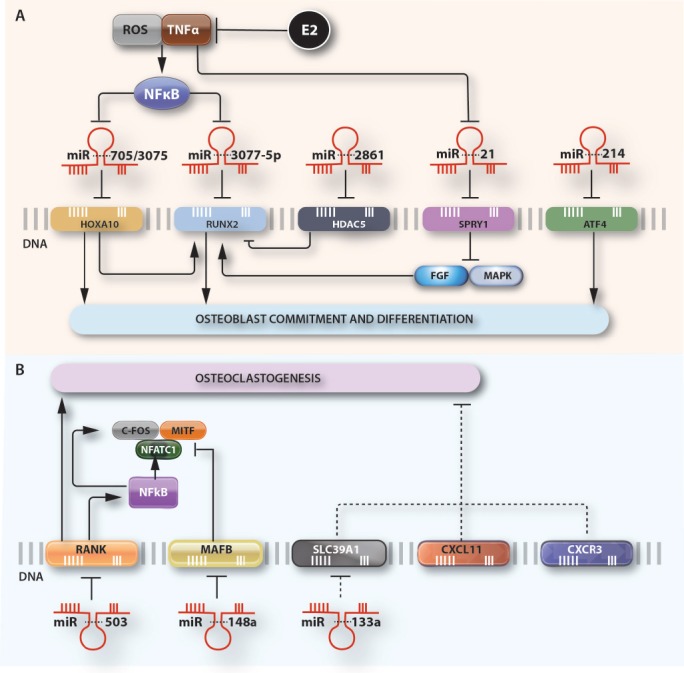Figure 2.

microRNAs affect the expression of specific genes during A) osteoblastogenesis and B) Osteoclastogenesis. MiR-3077-5p and miR-214 suppress osteogenic differentiation by directly inhibiting their respective target-genes. Conversely miR-705, miR 3075, miR-2861 and miR-21 directly target negative regulators of osteoblastogenesis resulting in enhanced osteoblast differentiation. The increased expression of miR-705 and miR-3077-5p and decreased levels of miR-21 are linked to high levels of TNFα and ROS, associated with estrogen deficiency. miR-21 suppresses Sprouty (SPRY) family of genes that antagonize the FGF signal transduction pathway in osteoblasts. Similarly, miR-503 inhibits osteoclastogenesis by directly targeting RANK gene while miR-148a and miR-133a promote osteoclastogenesis by directly targeting negative regulators of osteoclast differentiation. (Abbreviations: ROS, reactive oxygen species; TNFa, tumor necrosis factor; E2, estradiol; NFkb, nuclear factor-kappa-B; RUNX-2, Runt-related transcription factor 2; HOXA10, Homeobox A10; HDAC5, histone deacetylase 5; SPRY1, Protein sprouty homolog 1; ATF4, activating transcription factor 4; FGF, fibroblast growth factor; MAPK, mitogen activated protein kinase, MITF, Microphthalmia-associated transcription factor; NFATC1, Nuclear factor of activated T-cells, cytoplasmic 1; RANK, Receptor Activator of Nuclear Factor κ B; MAFB, V-maf musculoaponeurotic fibrosarcoma oncogene homolog B; SLC39A1, Solute Carrier Family 39 Member 1;CXCL11, C-X-C motif chemokine 11; CXCR3, C-X-C Motif Chemokine Receptor 3; miR, microRNA).
